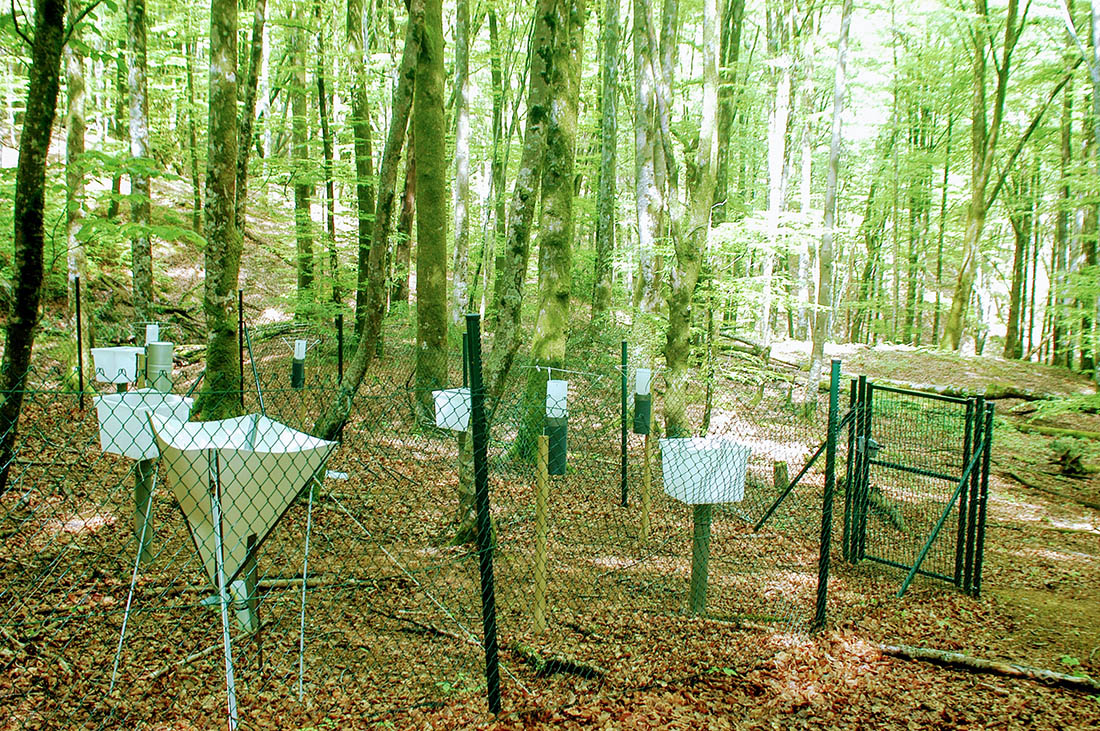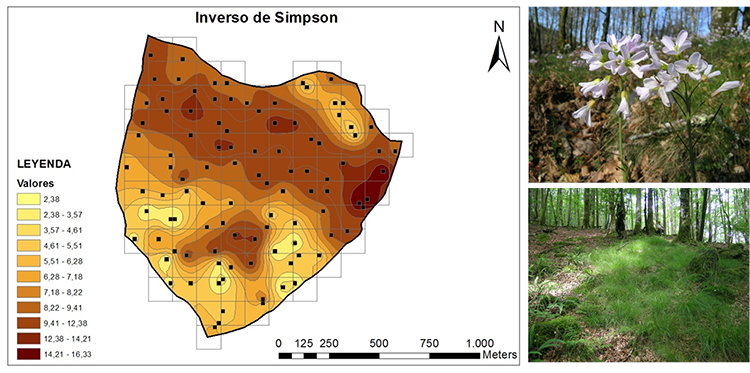 Integrated study of a forest watershed
Integrated study of a forest watershed
Since 2006, BIOMA researchers have been involved in the intensive monitoring of a hydrological basin located in the Señorío de Bertiz Natural Park (network Natura 2000).
The project, which is part of the International Cooperative Program on Integrated Monitoring (ICP-IM) of the Geneva Long-range Transboundary Air Pollution (CLRTAP) agreement , aims to monitor the state of ecosystems, develop and validate models to predict ecosystem evolution and provide a scientific basis for conservation strategies.

The results obtained to date indicate that the hydrological basin studied in Bertiz, of 135 hectares, is in a very good state of conservation, showing a very high biodiversity. In the 102 monitoring grids, 128 vascular species, 110 species of bryophytes, 160 species of fungi (of the 500 species catalogued in the beech forests of Navarra) and 30 species of ectomycorrhizae associated with the roots of beech(Fagus sylvatica) have been identified. These data give us an idea of the high floristic biodiversity of the natural park.

The good state of conservation of the Señorío de Bertiz can be extended to the Regata del Suspiro that runs through the basin. All the fish species found to date are autochthonous and some of them, such as the cavilat(Cottus aturi), only appear in slightly altered mountain stretches, constituting an excellent indicator of the good ecological state of the regatta.
With respect to the levels of pollutants detected, these are very low, as corresponds to a rural area far from pollutant sources. In this sense, a retrospective study of the evolution of the air quality of the Señorío de Bertiz has been carried out by analyzing specimens of moss preserved in herbariums since 1879. The results indicate that heavy metal pollution in the area was significantly higher in the 19th century than today. This fact has to do with the use of the territory at that time, when coal mines were frequent to feed the numerous ironworks in the surrounding valleys, facilities that released pollutants into the atmosphere generated in the combustion processes.

The levels and composition of atmospheric particulate matter (PM10) and the deposition of organic compounds such as polycyclic aromatic hydrocarbons (PAH) have also been determined. The levels detected are similar to those of other rural areas, with road traffic and biomass burning being the main sources of pollution in the area.
On the other hand, the programs of study on biodiversity carried out in the Natural Park have shown that from the 19th century to the present day there has been a gradual increase in the appearance of nitrophilous species, which would be indicative of the increase in anthropogenic nitrogen levels in the area. This trend has been corroborated by the analysis of rainwater, detecting nitrogen levels close to the critical load established for beech forests (10 kg N ha-1 yr-1), a threshold at which damage to the ecosystems can begin to occur.
It should be noted that the fact of having a study site such as Bertiz is essential to acquire long time series of data and thus study the evolution of ecosystems in relation to environmental problems as important as climate change, biodiversity loss or the deposition of pollutants. Therefore, it is planned to continue with the monitoring activities until data series are available for a minimum period of at least 25 years.
